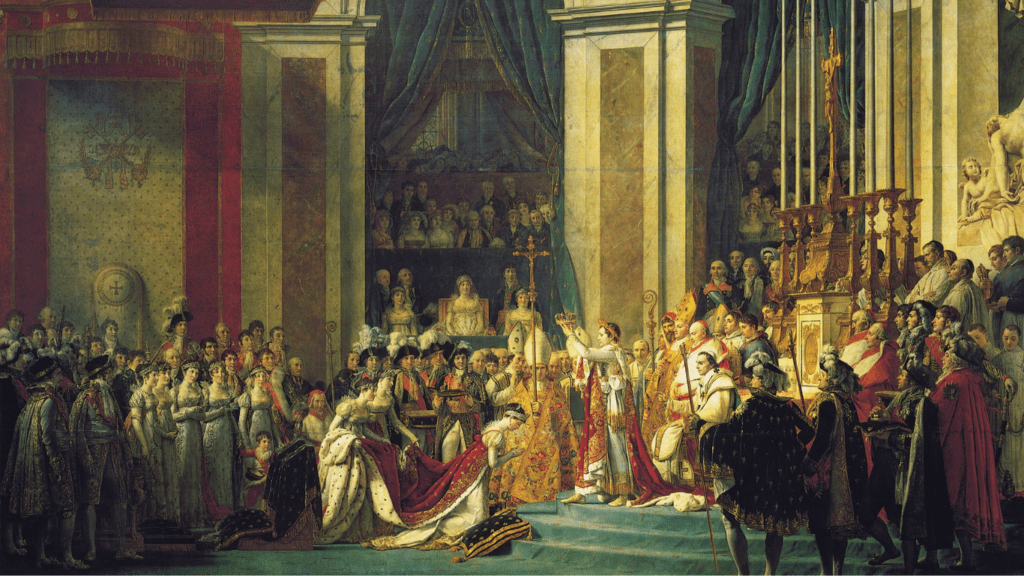Prehistoric Art
Prehistoric art represents the earliest form of human expression. Dating back to approximately 40,000 BCE, it includes cave paintings, rock carvings, and sculptures. These artifacts reveal insights into the lives and beliefs of early humans, who primarily used natural materials like charcoal and ochre.
Cave Paintings
Cave paintings are among the most famous examples of prehistoric art. Discovered in locations such as Lascaux, France, and Altamira, Spain, these paintings typically depict animals like bison, horses, and deer. The vivid use of color and intricate details suggest that early humans were deeply connected to the animal world, possibly for hunting or ritualistic purposes.
Petroglyphs
Petroglyphs refer to images carved into rock surfaces. Found worldwide, examples include the petroglyphs in Valcamonica, Italy, and the Coso Range in California. These carvings often depict scenes of hunting, rituals, and daily life. The repetitive patterns and symbols indicate a form of communication or documentation.
Venus Figurines
Venus figurines are small statuettes of female figures. Made from stone, ivory, or bone, these figurines date back to the Upper Paleolithic period (around 28,000 BCE to 20,000 BCE). Examples include the Venus of Willendorf and Venus of Hohle Fels. These figures, characterized by exaggerated female features, are believed to represent fertility or goddess worship.
Megalithic Structures
Megalithic structures are large stone constructions from prehistory. Stonehenge in the United Kingdom and the dolmens in Korea exemplify these structures. The purpose of these megaliths remains debated among scholars, but they likely had ceremonial or astronomical significance.
Prehistoric art serves as a crucial foundation in the timeline of art history. By examining these early expressions, we gain a deeper understanding of the development of human creativity and communication.
Classical Art
Classical art encompasses the rich and diverse artistic output from the ancient civilizations of Egypt, Greece, and Rome. Each of these cultures contributed distinctly to the development of human creativity.
Ancient Egyptian Art
Ancient Egyptian art, predominant from 3000 BCE to 30 BCE, reflects a unique blend of religion and culture. Egyptians used their art primarily for spiritual and ritual purposes. Hieroglyphics, pyramid murals, and statuary like the Great Sphinx exemplify this integration. Statuary often portrayed gods, pharaohs, and entities in stylized, symbolic forms, emphasizing idealism over realism.
Greek Art
Greek art evolved significantly from 800 BCE to 30 BCE, focusing on naturalism and humanism. Artists in Greece pioneered techniques in sculpture, pottery, and architecture. Sculptures such as those from the Parthenon display realistic human forms and expressions. Pottery featured scenes of mythology and daily life. Greek architects developed the Doric, Ionic, and Corinthian orders, influencing structures like the Parthenon and the Temple of Zeus.
Roman Art
Roman art, spanning from 500 BCE to 476 CE, borrowed heavily from Greek traditions while adding pragmatism and grandeur. Romans excelled in architecture and engineering, creating enduring structures like the Colosseum and aqueducts. They also advanced portrait sculptures, capturing realistic, individualized features. Mosaics and frescoes adorned public and private spaces with intricate and colorful designs, highlighting daily life and mythology.
Medieval Art
Medieval art spans from the fall of the Roman Empire in 476 CE to the dawn of the Renaissance around 1400 CE. This period saw distinct styles and forms influenced by religion and societal changes.
Byzantine Art
Byzantine art thrived from the 4th to the 15th century in the Eastern Roman Empire. This style focused on religious themes, particularly Christian iconography. Key elements include mosaics, icons, and illuminated manuscripts. Mosaics adorned the walls and ceilings of churches, using small pieces of colored glass to create vibrant images. Icons, representations of saints and religious figures, were pivotal in both public worship and private devotion. Illuminated manuscripts, richly decorated with gold and vivid colors, often contained religious texts.
Romanesque Art
Romanesque art, flourishing between the 10th and 12th centuries, drew inspiration from Roman architecture. Massive stone structures with thick walls, small windows, and round arches characterize this style. Sculptural elements frequently decorated portals and capitals, depicting biblical scenes and symbolic creatures. Romanesque paintings, often frescoes and murals, adorned church interiors, using bold lines and vivid colors to narrate religious stories.
Gothic Art
Gothic art emerged in the mid-12th century and lasted until the 16th century. This style introduced pointed arches, ribbed vaults, and flying buttresses to create towering cathedrals with expansive stained glass windows, which depicted biblical scenes and saints’ lives. Sculptures became more naturalistic, reflecting human emotions and movements. Gothic manuscripts, known for elaborate decorations and intricate details, included both religious and secular texts.
Medieval art, encompassing Byzantine, Romanesque, and Gothic styles, reflects the profound influence of Christianity and the dynamic changes in European society during this era.
Renaissance Art

Renaissance Art marks a significant shift in European culture, beginning in the 14th century and flourishing through the 17th century. It’s characterized by a renewed interest in classical antiquity, humanism, and individual expression.
Early Renaissance
Early Renaissance spanned the 14th to the early 15th centuries and started in Florence, Italy. Artists emphasized linear perspective and naturalism, creating more realistic representations of the human form and space. Filippo Brunelleschi was a pioneer in perspective, while Masaccio’s frescoes, like “The Tribute Money,” exemplified realistic human figures and emotions. Donatello revolutionized sculpture with works like “David,” showcasing anatomical accuracy and life-like expressions.
High Renaissance
High Renaissance, from the late 15th to the early 16th centuries, reached its zenith in Rome and saw the dominance of key figures like Leonardo da Vinci, Michelangelo, and Raphael. These artists mastered techniques of composition, balance, and human anatomy. Leonardo’s “Mona Lisa” and “The Last Supper” highlight his skill in capturing intricate details and emotional depth. Michelangelo’s “David” and Sistine Chapel ceiling frescoes display unparalleled sculptural and painterly prowess. Raphael is renowned for his “School of Athens,” a fresco celebrating classical philosophy and featuring harmonious spatial composition and graceful figures.
Baroque Art
Baroque art, emerging in the late 16th century and lasting through the 17th century, focused on grandeur and drama. Its roots are in Rome, but it spread across Europe, influencing diverse regions.
Characteristics of Baroque Art
Baroque art featured vivid contrasts between light and dark, known as chiaroscuro. Artists aimed to evoke emotions through dramatic scenes. Movement and energy appeared in compositions, making viewers feel immersed.
Notable Baroque Artists
- Caravaggio: Known for intense realism and dramatic lighting, his works include “The Calling of Saint Matthew” and “Judith Beheading Holofernes.”
- Peter Paul Rubens: Famous for dynamic compositions and vibrant colors, notable works like “The Descent from the Cross” showcase his style.
- Rembrandt van Rijn: Master of light and shadow, his paintings such as “The Night Watch” balance group portraiture and striking clarity.
Baroque Architecture
Baroque architecture emphasized bold, curvaceous forms and grandiose designs. Key structures include St. Peter’s Basilica in Vatican City, the Palace of Versailles in France, and the Church of San Carlo alle Quattro Fontane in Rome.
Impact on Music and Literature
Baroque influence extends beyond visual arts, impacting music and literature. Composers like Johann Sebastian Bach and George Frideric Handel created intricate compositions reflecting Baroque complexity and emotions. Literary works in this era mirrored the dramatic and elaborate style of Baroque art.
Baroque art profoundly shaped the cultural landscape, leaving legacies in visual arts, architecture, music, and literature. Its emphasis on drama, emotion, and movement set the groundwork for future artistic innovations.
Neoclassicism
Neoclassicism emerged in the mid-18th century as a reaction against the ornate Rococo style. Emphasizing simplicity, symmetry, and classical themes, it drew inspiration from ancient Greece and Rome. Neoclassical art aimed to revive the virtues of order, harmony, and rationality.
Characteristics and Techniques
Neoclassical artists focused on idealized forms and balanced compositions. They used clean lines, smooth surfaces, and restrained color palettes. This movement often incorporated classical motifs like columns, drapery, and mythological subjects.
Key Artists
Prominent Neoclassical artists include:
- Jacques-Louis David: Known for “The Oath of the Horatii” and “Death of Socrates.”
- Jean-Auguste-Dominique Ingres: Famous for “La Grande Odalisque” and “The Apotheosis of Homer.”
- Antonio Canova: Renowned for sculptures like “Psyche Revived by Cupid’s Kiss” and “Perseus with the Head of Medusa.”
Architectural Influence
Neoclassical architecture emphasized grandeur and simplicity. Buildings featured columns, domes, and pediments reminiscent of ancient temples. Notable examples include:
- The Panthéon in Paris: Originally designed as a church, later converted into a mausoleum.
- The United States Capitol in Washington, D.C.: Reflects democratic ideals and classical forms.
Cultural Impact
Neoclassicism influenced various domains, from visual arts to literature and music. It reinforced Enlightenment ideals by promoting intellectual and moral clarity. This movement laid the groundwork for subsequent artistic developments, including Romanticism.
Legacy
Neoclassicism remains a significant historical art movement. Its emphasis on classical ideals continues to inspire artists, architects, and designers. By revisiting ancient models, Neoclassical art bridged past and present cultural narratives.
Comparative Overview
Comparing Neoclassicism with previous movements:
| Movement | Time Period | Characteristics |
|---|---|---|
| Baroque | Late 16th C. | Grand, dramatic, emotional |
| Rococo | Early 18th C. | Ornate, playful, decorative |
| Neoclassicism | Mid-18th C. | Simple, symmetrical, rational |
This comparison highlights Neoclassicism’s return to formality and classical inspiration after the exuberance of Baroque and Rococo styles.
Romanticism
Romanticism emerged in the late 18th century as a response to Neoclassicism, emphasizing emotion, individualism, and the sublime in nature. Contemporary artists focused on personal experience and the mystical aspects of life, contrasting Neoclassicism’s rationality and order. Romanticism spanned various artistic disciplines, including literature, music, and visual arts.
Key Characteristics
- Emphasis on Emotion: Romanticism highlighted intense emotions, including heroism and passion, evident in works like Eugène Delacroix’s Liberty Leading the People.
- Nature’s Sublimity: Artists depicted nature as powerful and awe-inspiring, as seen in Caspar David Friedrich’s landscapes, showcasing vast, dramatic scenes.
- Individualism: Focus on personal experience and inner worlds marked this movement, with artists like Francisco Goya exploring the human psyche and social issues.
- Mysticism and Imagination: Romantic artists embraced mysticism, the supernatural, and imagination, often blending reality and fantasy, illustrated by William Blake’s visionary works.
Notable Artists
- Eugène Delacroix: Known for dynamic compositions and vibrant use of color.
- Caspar David Friedrich: Renowned for landscape paintings that evoke the sublime.
- Francisco Goya: His works often delve into dark themes and social commentary.
- William Blake: Combined poetry and painting, creating works with rich symbolism and mysticism.
Impact on Culture
Romanticism influenced not just art but also literature and music, with figures like William Wordsworth and Ludwig van Beethoven echoing its themes. This movement prioritized individual expression and emotional depth, leaving a lasting legacy on how we perceive art and creativity.
Comparative Overview
While Neoclassicism focused on clarity, order, and classical themes, Romanticism celebrated emotion, nature’s power, and individualism. If comparing Jacques-Louis David’s neoclassical works with Delacroix’s romantic pieces, the shift from structured forms to dynamic, expressive compositions becomes evident. This transition highlights Romanticism’s role in expanding the boundaries of artistic expression.
Realism
Realism emerged in the mid-19th century, focusing on depicting everyday life without romanticization or idealism. This movement responded to Romanticism’s emotional intensity, aiming instead for accuracy and truth in representation.
Key Characteristics
Realism’s main focus was on ordinary subjects. Artists depicted scenes from daily life, especially those involving working-class individuals. Attention to detail and a commitment to portraying life accurately defined this movement. Artists avoided exaggerated drama, aiming for authenticity in their works.
Prominent Artists
Jean-François Millet: Best known for his rural scenes, Millet focused on the lives of peasants. “The Gleaners” captures the essence of rural toil.
Gustave Courbet: As a pioneer of Realism, Courbet emphasized social issues. “The Stone Breakers” highlights the harshness of manual labor.
Honoré Daumier: Through his paintings and prints, Daumier critiqued society. “The Third-Class Carriage” showcases the struggles of the lower classes.
Influence and Legacy
Realism brought a significant shift in the art world by challenging previous romantic and idealized portrayals. It paved the way for later movements like Impressionism and Modernism, which continued to explore new themes and techniques. Realism’s focus on ordinary life and detail-rich representation influenced literature and theater as well, encouraging writers and playwrights to adopt a more realistic tone in their narratives and characterizations.
Impressionism
Impressionism emerged in France during the late 19th century, marking a shift from Realism’s detailed representation to a focus on light and color. Artists sought to capture fleeting moments, often painting en plein air (outdoors), which allowed them to depict natural light’s changing qualities.
Key Characteristics
- Light and Color: Impressionists prioritized how light affects color. Instead of blending colors smoothly, they placed unblended colors directly on the canvas, creating a vibrant surface.
- Brushstrokes: Visible, rapid brushstrokes characterized this movement. These brushstrokes added a sense of movement and spontaneity.
- Subject Matter: Common subjects included landscapes, urban scenes, and leisure activities (e.g., boating, dancing). The focus was often on ordinary moments rather than historical or mythological themes.
Prominent Artists
- Claude Monet: Monet’s “Impression, Sunrise” (1872) gave the movement its name. He is known for series paintings (e.g., “Water Lilies”).
- Edgar Degas: Famous for ballet dancers, Degas captured the human figure with an innovative use of perspective and movement.
- Pierre-Auguste Renoir: Renoir’s works, like “Luncheon of the Boating Party” (1881), showcased vibrant, light-filled scenes of social gatherings.
- Camille Pissarro: Pissarro’s rural and urban scenes provided a critical link between earlier Realism and later modern styles.
Influence and Legacy
Impressionism faced initial rejection from conventional art institutions but gradually gained acceptance. Its techniques and focus on light influenced subsequent movements like Post-Impressionism and Modernism. The shift towards painting outdoors and capturing everyday life transformed art, leading to more personal and experimental approaches.
| Artist | Notable Works | Focus Areas |
|---|---|---|
| Claude Monet | “Impression, Sunrise,” “Water Lilies” | Light, Color, Landscapes |
| Edgar Degas | Ballet Dancers | Human Figure, Movement, Perspective |
| Pierre-Auguste Renoir | “Luncheon of the Boating Party” | Social Gatherings, Light, Vibrancy |
| Camille Pissarro | Rural and Urban Scenes | Everyday Life, Transition Between Realism and Modernism |
Impressionism’s emphasis on personal perception and momentary impressions reshaped the artistic landscape, making it a pivotal movement in art history.
Modern Art
Modern art, spanning the late 19th century to the mid-20th century, introduced groundbreaking ideas and techniques. With an emphasis on innovation, it sought to break away from tradition and explore new perspectives in art.
Cubism
Cubism, pioneered by Pablo Picasso and Georges Braque in the early 20th century, revolutionized visual art. This movement fragmented objects into geometric shapes, presenting multiple perspectives within a single plane. Influenced by African art, Cubism emphasized abstracted forms over realistic representation. For instance, Picasso’s “Les Demoiselles d’Avignon” exemplifies this approach with its angular figures and unconventional composition.
Key Characteristics of Cubism:
- Geometric shapes: Artists used cubes, cones, and spheres.
- Multiple viewpoints: Objects were depicted from various angles simultaneously.
- Abstract representation: Focused on the essence rather than a realistic portrayal.
Surrealism
Surrealism, emerging in the 1920s and led by André Breton, aimed to unlock the unconscious mind. Inspired by Sigmund Freud’s psychoanalytic theories, it delved into dreams and fantasies. Artists like Salvador Dalí and René Magritte created bizarre, dream-like scenes that defied logic. Dalí’s “The Persistence of Memory,” with its melting clocks, is a surrealist icon illustrating the fluidity of time.
- Dream imagery: Artwork featured illogical and fantastical elements.
- Automatism: Techniques allowing spontaneous creation, bypassing rational thought.
- Juxtaposition: Unexpected combinations of objects to provoke thought.





